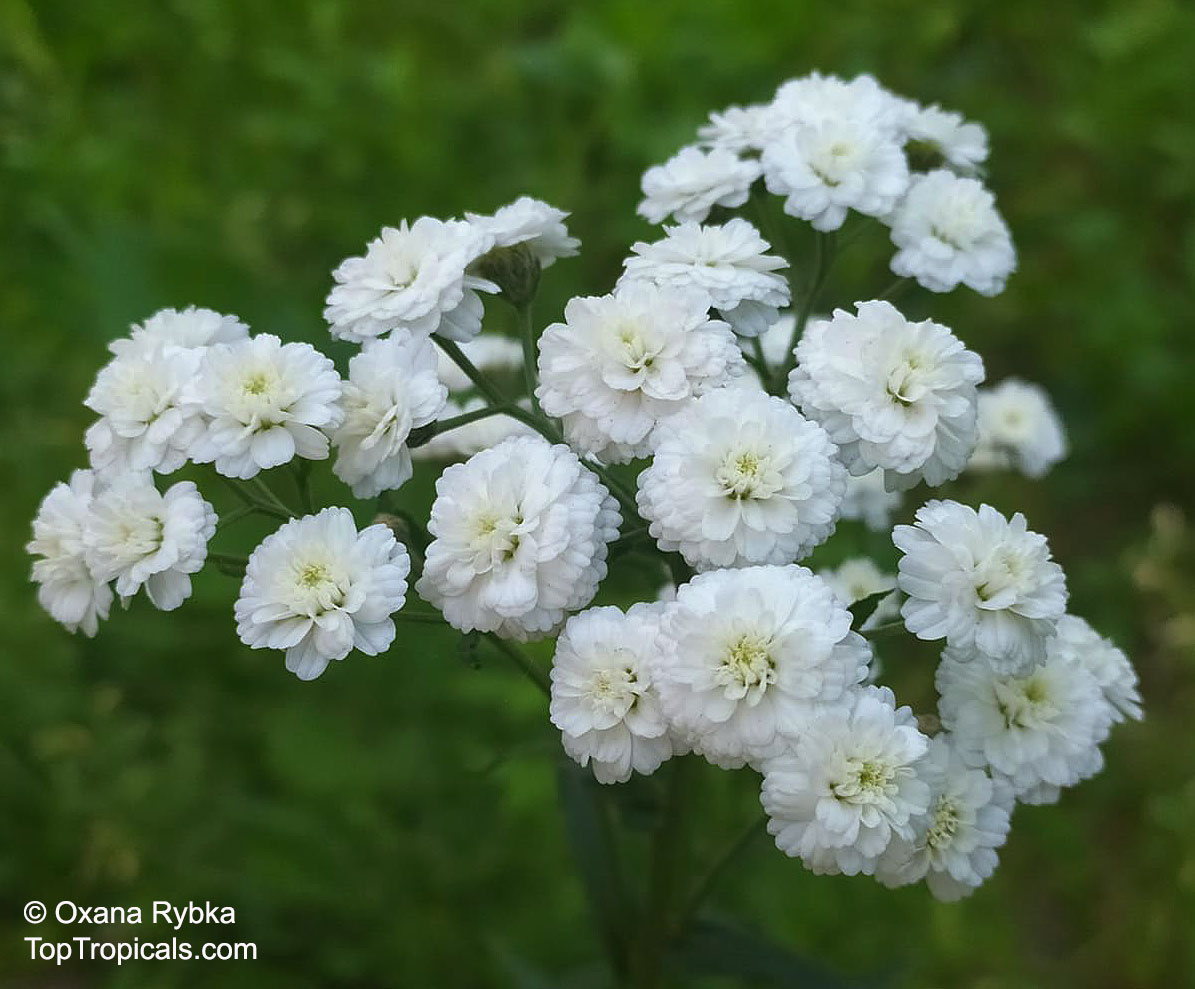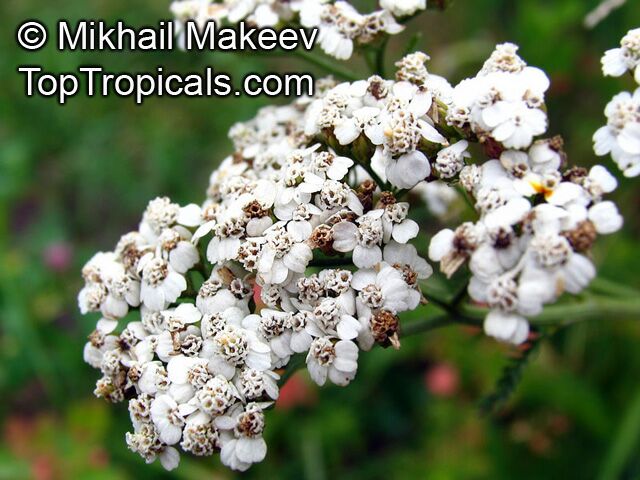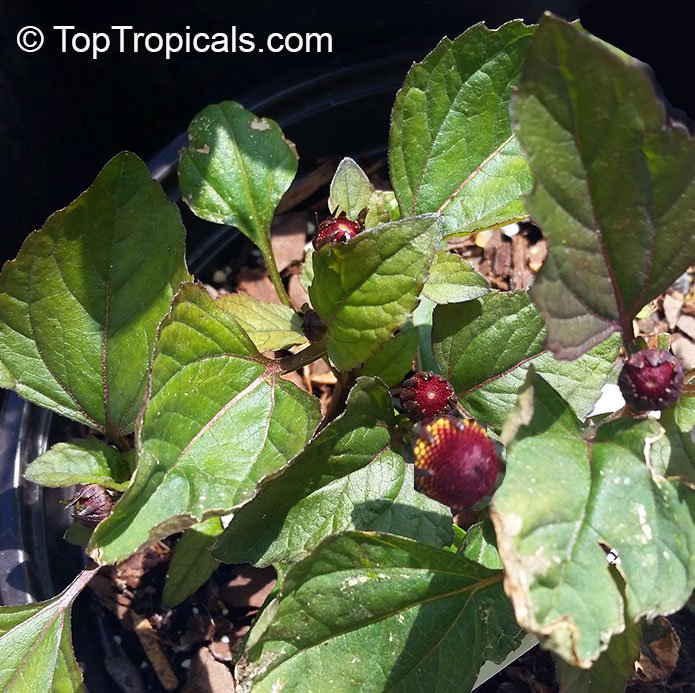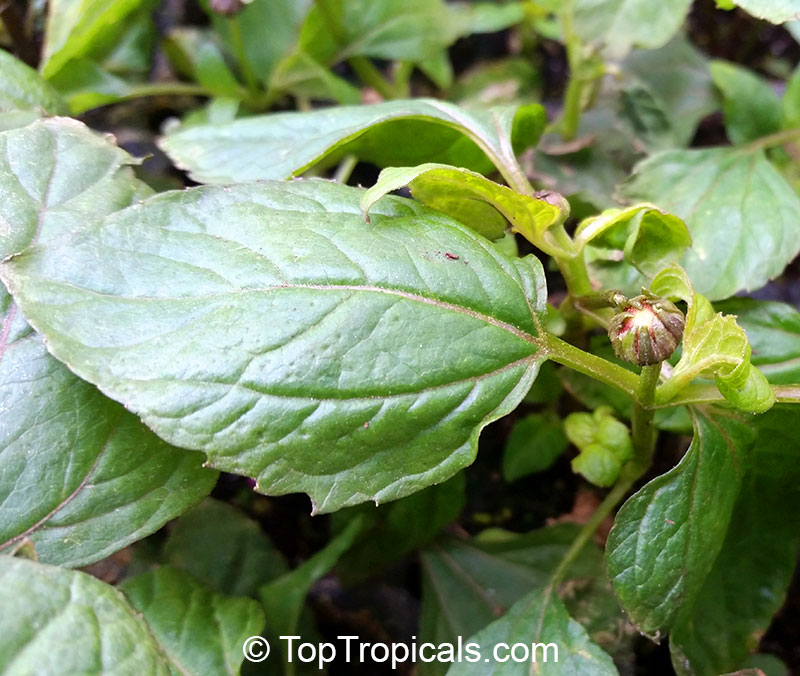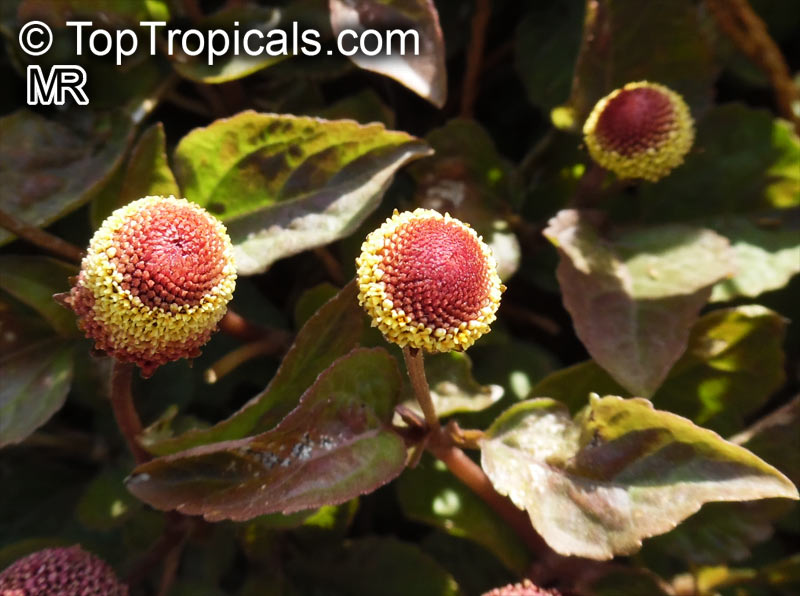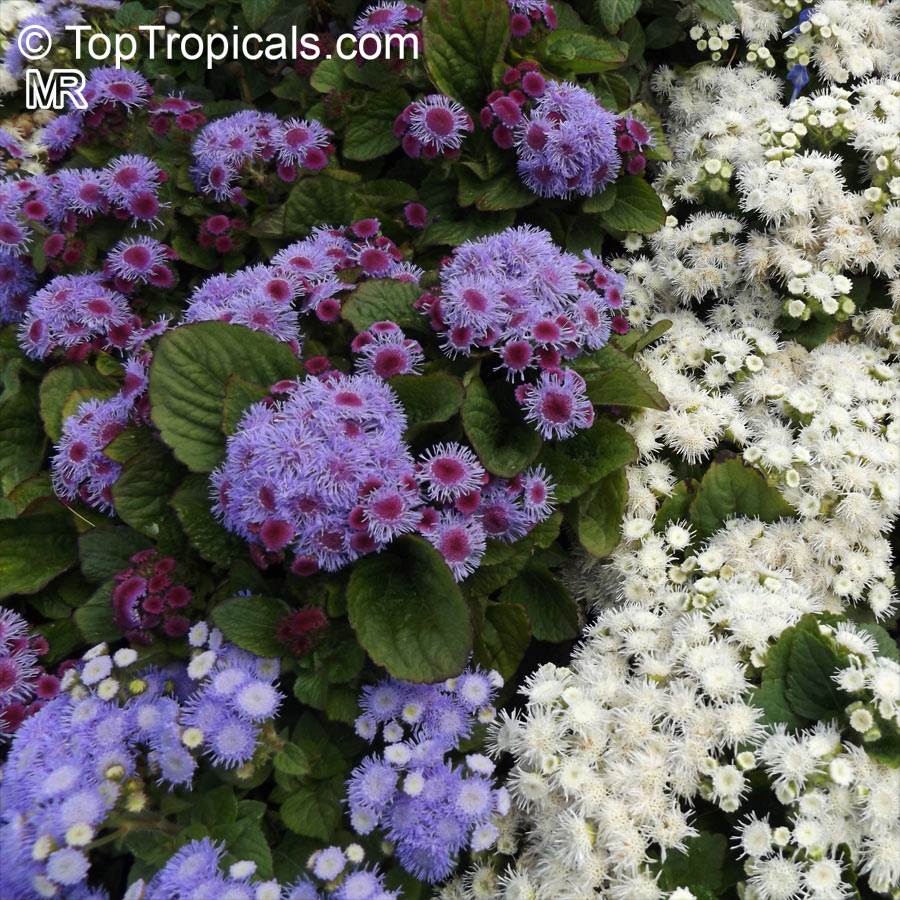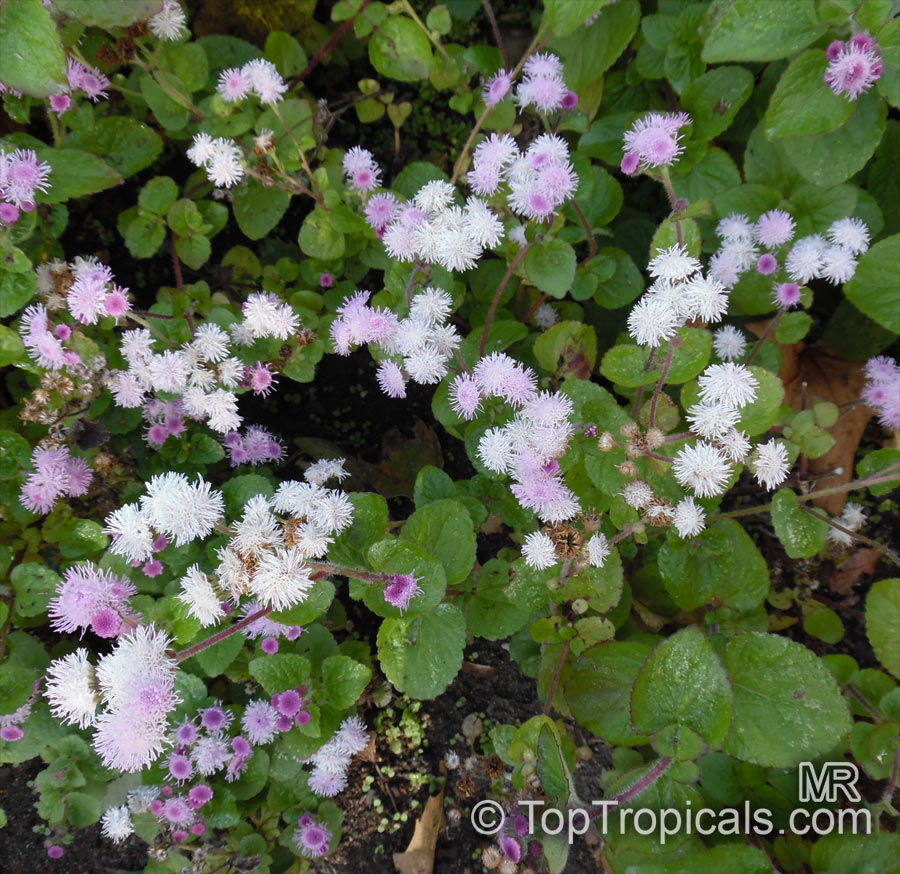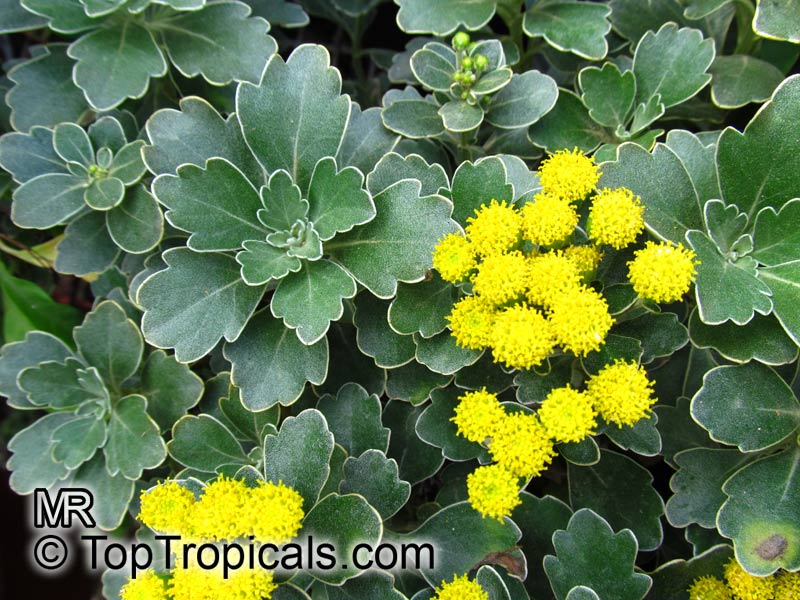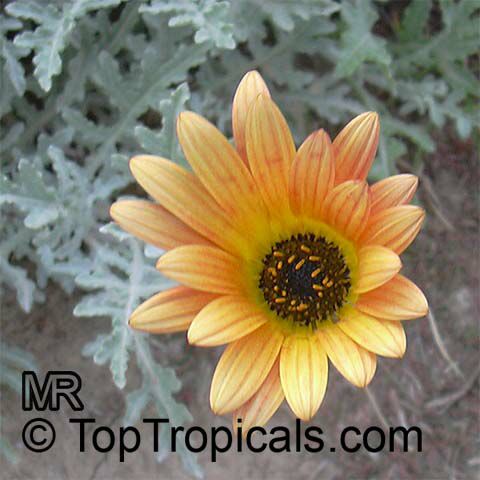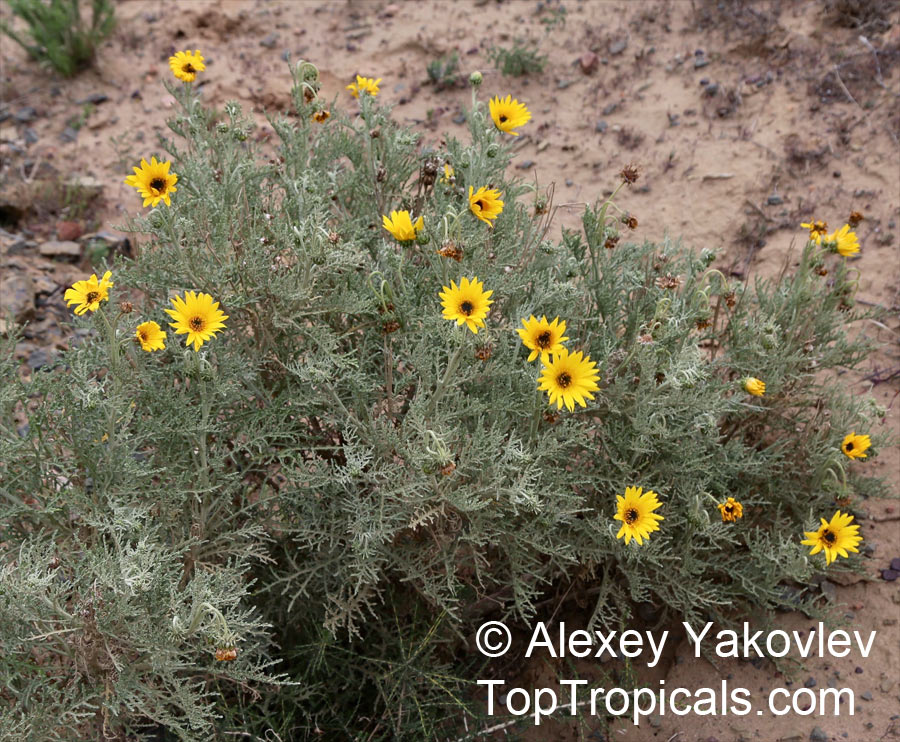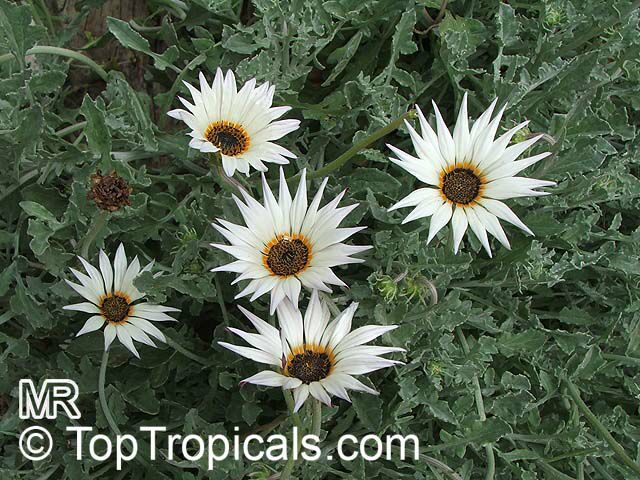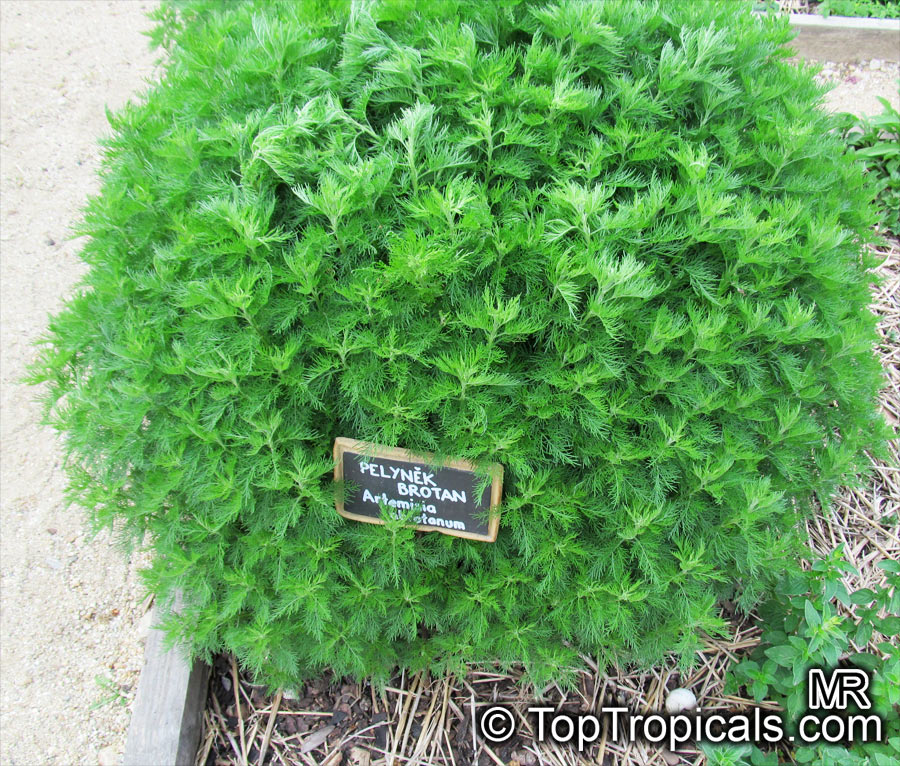Asteraceae - Botanical Family
| Number of plants found: 111 | Next | 
|
Go to page: | 1 | 2 | 3 | 4 | 5 | Last |
Botanical name: Achillea sp.
Common names: Yarrow, Thousand-leaf, Milfoil, Sneezewort, Soldier's Friend
Family: Asteraceae











Common Yarrow is a drought tolerant species of which there are several different ornamental cultivars.
The herb is purported to be a diaphoretic, astringent, tonic, stimulant and mild aromatic. Yarrows are well suited to the wildflower garden. The soft, lacy foliage makes an interesting and beautiful groundcover. The flowerheads are used in arrangements, fresh and dried.
Botanical names: Acmella oleracea, Spilanthes oleracea
Common names: Toothache Plant, Paracress, Botox Plant, Jambu
Family: Asteraceae
Origin: Brazil










Toothache Plant is a medicinal herb that has been used for generations to manage the pain of toothaches. Both the leaves and the attractive golden flowers can be used as a natural anesthetic. Simply chew the leaves or flowers for a few seconds then you will experience a tingling and numbing sensation in your mouth. An infusion or tincture made from the Toothache Plant is said to promote gum and throat health due to its strong antibacterial properties. For culinary purposes, small amounts of shredded fresh leaves are said to add a unique flavor to salads. Cooked leaves lose their strong flavor and may be used as leafy greens. Both fresh and cooked leaves are used in dishes such as stews in northern Brazil. They are combined with chilis and garlic to add flavor and vitamins to other foods. The use of jambu extract as a food flavor is described as having an odor of citrus, herbal, tropical or musty odor, and its taste can be pungent, cooling, tingling, numbing, or effervescent.
Acmella Oleracea extract is considered a natural alternative to Botox. Applied topically, Acmella Oleracea reportedly reduces muscle tension, reducing facial wrinkles caused by tense or contracted facial muscles. It is considered a natural muscle relaxant and has been traditionally used as an herbal Orajel of sorts, thanks to the presence of analgesic alkylamides called spilanthol. This spilanthol is thought to have the same paralyzing effects on facial muscles as it does on gums, reducing wrinkles by relaxing the skin. It's seen in topical formulas and can easily penetrate the skin, inhibiting contractions in subcutaneous muscles.
The plant is a small, erect, it grows quickly and bears gold and red inflorescences. It is frost-sensitive but perennial in warmer climates. Can be grown in a container and as a houseplant.
Botanical name: Ageratum conyzoides
Common names: Mexican Ageratum, Yoat Weed
Family: Asteraceae
Origin: Central America , Caribbean










The Ageratum is an annual herb that grows to a height of around two feet and produces clusters of small, pretty flowers along its hairy stems. In some countries, it is classed as a weed which is hard to control. In traditional medicine systems in areas where Ageratum grows continuously, it is widely used. In Brazil, an infusion of its leaves or the entire plant is employed to treat colic, colds, fevers, diarrhea, rheumatism and spasms, as well as serving as a tonic. It is also recommended for the treatment of burns and wounds. In countries of Latin and South America, it is utilized for its antibacterial properties to treat infectious conditions and bacterial infections. In Africa, it is employed for fever, rheumatism, headache, pneumonia, wounds, burns and colic.
Ageratum is native to Central America and the Caribbean and can be grown in USDA Zone 9-11, either outdoors or indoors in cooler climates. It grows best in rich, moist soil, with regular watering. Its colorful blooms, which come in shades of pink, white and off-white, will attract butterflies and hummingbirds. The flowering season of Ageratum is usually all summer and the shrub often self-seeds depending on the climate.
To keep Ageratum healthy, the soil should be kept moist but not soggy. Deadhead the spent flowers and avoid overwatering to prevent root rot. If planting in a pot, it is best to first use a potting soil specifically formulated for containers, and then cover with 1-2 inches of a moisture-retaining material such as straw or bark. To encourage blooming, cut the plant back after flowering.
While Ageratum has a place in traditional medicine systems, it is believed to be invasive in parts of the United States. Therefore, caution should be used when planting and spreading to wild, natural areas should be avoided to prevent ecological damage.
Botanical name: Ageratum houstonianum
Common name: Flossflower
Family: Asteraceae
Origin: Mexico, Belize, and Guatemala









As a long-blooming, summer annual, this plant keeps a nice mounded shape throughout its bloom period. It is covered with clusters of small flowers. It comes in blue, pink, and white blooms. It generally grows about a foot high, though some dwarf varieties are available. Mass blue Ageratum is beautiful in beds with yellow marigolds for complementary colors, or with pink begonias to create a soft pastel carpet. Ageratum is very easy to grow in a sunny location.
Botanical names: Ajania pacifica, Chrysanthemum pacificum
Common name: Pacific Chrysanthemum
Family: Asteraceae
Origin: Japan











Ajania pacifica forms a bushy mound of lobed green leaves, attractively edged with silver, remaining attractive all season long. Some gardeners grow this plant primarily for its foliage. Small yellow button flowers appear very late in the fall, sometimes lasting until Christmas. It is quite hardy in cold climates, going completely dormant in cold-winter regions, but in warmer climes it is more-or-less evergreen (though at its best in spring and summer).
Botanical names: Arctotis sp., Venidium, x Venidoarctotis
Common name: African Daisy
Family: Asteraceae
Origin: South Africa









This small, evergreen shrub grows 2-5 feet tall and wide, providing a backdrop for its long-blooming flowers. Arctotis sp. (African Daisy) is native to South Africa and adaptable to many climates. It prefers full sun, moderate water, and well-drained soil for best performance.
The floral display of Arctotis sp. is an artful patchwork of white, off-white, yellow, orange, red, and crimson or vinous flowers. These blooms are a hive of activity, buzzing with butterflies and hummingbirds that come to the plentiful nectar. It's a great choice for low-maintenance landscapes and is particularly effective when planted in groupings.
When grown in containers, Arctotis sp. needs consistent moisture during the summer and may need additional protection from cold winter winds. In regions where winter temperatures dip below freezing, the plant should be brought indoors over winter or protected with a generous layer of mulch.
Arctotis sp. is a reliable performer that has few problems once established. It can be trimmed to control its size and shape, or left to its exuberant self as a wildflower. With its attractive foliage and cheerful flowers, it's no wonder Arctotis sp. is a popular pick for a mix of sunny spaces, like borders, beds, and containers.
Botanical name: Artemisia abrotanum
Common name: Southernwood
Family: Asteraceae









Other common names include: old man, boy's love, oldman wormwood, lover's plant, appleringie, garderobe, Our Lord's wood, maid's ruin, garden sagebrush, European sage, sitherwood and lemon plant.
Botanical name: Artemisia arborescens
Common name: Tree Wormwood
Family: Asteraceae
Origin: Mediterranean









Artemisia arborescens (Tree Wormwood) is an upright-growing shrub that can grow to 5-10 ft height. It has silvery-grey, finely divided, fragrant foliage. This shrub is extremely drought-hardy and prefers full sun, but will also tolerate partial shade.
Artemisia arborescens should be planted in a well-draining location in full sun. Generally, it is a low maintenance plant tolerant of drought, and a moderate amount of water will be sufficient. Pruning may be necessary for large shrubs, particularly if left unpruned for a long period of time.
For small shrubs (2-5ft tall), Artemisia arborescens is an ideal specimen for container gardens, even in cold regions. It does well in partial shade, and should be provided with frequent waterings. In cold climates, the plant should be brought in from outside during the winter months and allowed to rest indoors in a sunny location.
In addition to its ornamental foliage, Artemisia arborescens is a popular ethnomedical plant with multiple medicinal properties. It is used in various traditional medicines as a spice or herb. Some uses include treating digestive disorders and muscle pain.
With its ornamental foliage and its multiple uses, Artemisia arborescens is an ideal garden companion for any medicinal plant enthusiast.
Botanical name: Asteriscus maritimus
Common names: Gold Coin, Mediterranean Beach Daisy
Family: Asteraceae
Origin: Mediterranean






Asteriscus maritimus is well-suited to rock gardens and container cultivation.
| Next |  |
Use link to repeat this search:
https://toptropicals.com/cgi-bin/garden_catalog/cat.cgi?search_op=and&keyword_op=and&language=e&family=Asteraceae&number=10
&no_change_lang=1&user=tt&sale=1&first=0



